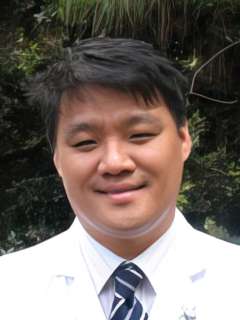
Mo Kang, DDS, PhD
Languages
Contact Information
Phone
Scientific Interests
The current research in Dr. Mo K. Kang's laboratory focuses on oral mucosal diseases including oral cancer, chemical and radiation-induced oral mucositis and aging-associated oral epithelial dysfunction. These studies were developed in Kang's laboratory from extensive investigations of the mechanisms underlying cellular senescence (aging) and immortalization of normal human oral keratinocytes (NHOK).
The mechanisms of cellular senescence play an important role in the lab's studies. Primary NHOK undergo a limited number of replications that spontaneously terminate through senescence. In human somatic cells, cellular senescence may occur from extrinsic factors, i.e., stress, or from intrinsic programming, i.e., telomere shortening. In NHOK, stress-associated senescence (SAS) appears to precede the telomere length-dependent senescence. Senescent NHOK exhibit numerous changes in phenotypic and molecular parameters, such as loss of cell proliferative capacity, flattened morphology, telomerase inactivation, reduced expression levels in p53 and p21WAF1/CIP1 and accumulation of p16INK4A. However, different from most other cell types, senescent NHOK do not show telomere shortening because the cells are undergoing SAS.
Senescence mechanism can be evaded to allow extended replicative lifespan of cells. In NHOK, overexpression of Bmi-1, a polycomb-group (PcG) transcription repressor, drastically enhances the regenerative capacity of cells. Thus, Bmi-1 is capable of evading the SAS and allows the cells to arrive at the replicative senescence resulting from progressive telomere shortening. The mechanism underlying the Bmi-1-induced extension of lifespan remains to be elucidated, but it appears that Bmi-1 enhance the cells' ability to cope with external stress, which is indeed responsible for SAS in NHOK. This can also be evinced by the fact that Bmi-1 enhances the cellular resistance to ionizing radiation (IR), which causes stress-associated premature senescence in NHOK. Therefore, upon expression of exogenous Bmi-1, NHOK gains capability to bypass the senescence mechanism triggered by the endogenous as well as exogenous stress. This property of Bmi-1 is being harnessed in Kang's lab to develop novel therapeutics against oral mucositis resulting from ionizing radiation.
The understanding of telomerase activation and cellular immortalization is also a key component of the research underway in Kang's lab. Cellular immortalization of NHOK requires activation of telomerase, which synthesizes the telomere sequences. Telomerase activation occurs primarily by enhanced expression of hTERT (human telomerase reverse transcriptase gene) resulting from the hTERT promoter activation. Survey of hTERT expression in oral epithelium in situ with varying degrees of histopathology led to the finding that hTERT activation occurs very early during oral carcinogenesis at the transition from the mild to moderate epithelial dysplasia. These findings raise the possibility that hTERT may be a potential therapeutic target for preneoplastic lesions to prevent further progression to malignant cancer. This can be accomplished by detailed understanding of hTERT promoter regulation during oral carcinogenesis.
Kang's laboratory also recently developed a novel high throughput screening technology called Òpromoter magnetic precipitation,Ó which allows for global screening of nuclear proteins that physically interact with hTERT promoter region in cancer-specific manner. Nuclear proteins in telomerase-positive oral cancer cells or telomerase-negative normal cells were incubated with hTERT promoter sequences immobilized onto paramagnetic beads. The hTERT promoter binding proteins were then separated from other nuclear proteins by magnetic fields. These proteins were fractionated and identified by mass spectrometry. Using this approach, Kang's lab has identified numerous novel proteins that physically bind the hTERT promoter in oral cancer-specific manner and is currently characterizing them for therapeutic purposes.
Since there are limitations using monolayer cultures as model systems, Kang has incorporated experimental model systems, in this case the 3D organotypic culture model, into the projects in his laboratories. These ÒraftÓ cultures are established from cultured oral fibroblasts and keratinocytes and mimic the oral mucosal tissues in the structural features. This technique is heavily utilized in his laboratory at present to validate the in vitro findings and is being continuously modified to develop novel assay systems that cannot be accomplished in monolayer cultures.
Highlighted Publications
Kang X, Chen W, Kim RH, Kang MK, Park NH. Regulation of the hTERT promoter activity by MSH2, the hnRNPs K and D, and GRHL2 in human oral squamous cell carcinoma cells. Oncogene. 2009 Jan 29;28(4):565-74. Epub 2008 Nov 17.
Kim RH, Kim R, Chen W, Hu S, Shin KH, Park NH, Kang MK. Association of hsp90 to the hTERT promoter is necessary for hTERT expression in human oral cancer cells. Carcinogenesis. 2008 Dec;29(12):2425-31. Epub 2008 Sep 26.
Shin KH, Kim RH, Kim RH, Kang MK, Park NH. hnRNP G elicits tumor-suppressive activity in part by upregulating the expression of Txnip. Biochem Biophys Res Commun. 2008 Aug 8;372(4):880-5. Epub 2008 Jun 9.
Kang MK, Kim RH, Kim SJ, Yip FK, Shin KH, Dimri GP, Christensen R, Han T, Park NH. Elevated Bmi-1 expression is associated with dysplastic cell transformation during oral carcinogenesis and is required for cancer cell replication and survival. Br J Cancer. 2007 Jan 15;96(1):126-33. Epub 2006 Dec 19.
Kim RH, Kang MK, Shin KH, Oo ZM, Han T, Baluda MA, Park NH. Bmi-1 cooperates with human papillomavirus type 16 E6 to immortalize normal human oral keratinocytes. Exp Cell Res. 2007 Feb 1;313(3):462-72. Epub 2006 Oct 28.